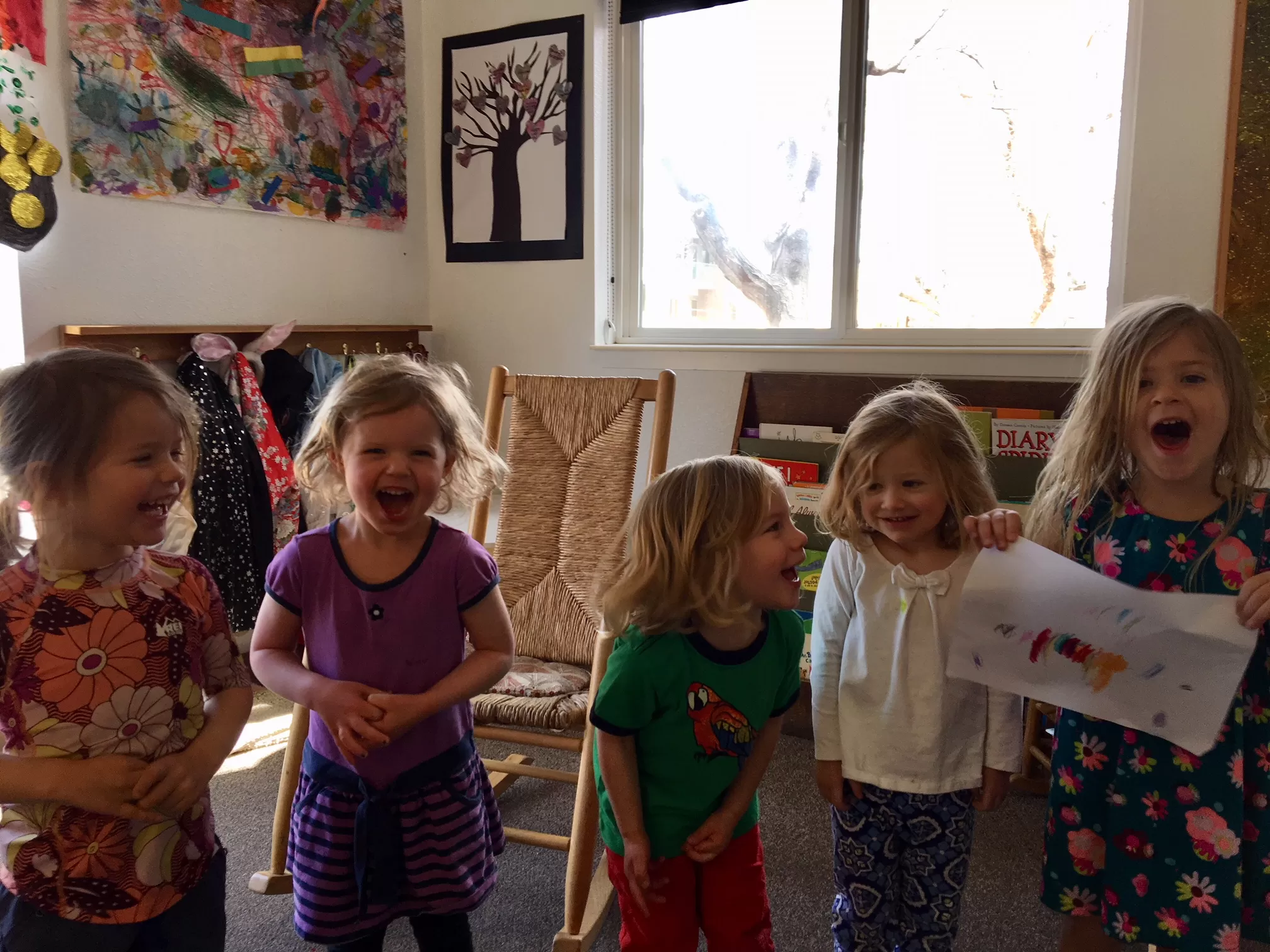Every day as a preschool teacher, I hear a silly knock knock joke that makes no sense, or a group of children laughing with a child that says “hop ding hing!” Why do children say nonsensical jokes or say silly things that get other preschoolers laughing?
An article written by Lawrence Kutner, PhD titled Humor As a Key to Child Development said “The specific things children laugh at tell us which developmental tasks they are struggling with. That is a pattern that runs throughout childhood. It explains why 3-year-olds, who are often still mastering toilet training, are enthralled by “bathroom” humor…Once children understand a concept they take great joy in playing with it. Two-year-olds who are beginning to master the intricacies of language will giggle uncontrollably when they hear a combination of words and nonsense syllables. They understand that the nonsense syllables are different from the words. The sounds are out of place. They are funny…Placing (a sock) on an ear is hysterical to 2-year-olds because they realize that it does not belong there. They share their mastery of that knowledge through laughter.”
I remember as a child my dad would put objects on his head, and pretend to sneeze, and the object would fly off his head. I laughed so hard and begged my dad to do it again! My dad continued this with my own children who equally loved it and wanted more. As a teacher, I too have continued the silliness of sneezing things off my head with the preschool children, and they laugh with delight! I have to admit that I do this with preschoolers not because I am checking their development, but because of a connection.
That feeling everyone gets when they share a laugh with a friend or stranger is bonding, if only for a fleeting moment. Laughter is universal, joyous, and can bring a sense of community. It is only fitting that I end my blog with a joke…
Q: How do you make a tissue dance?
A: You put a little boogie in it.



